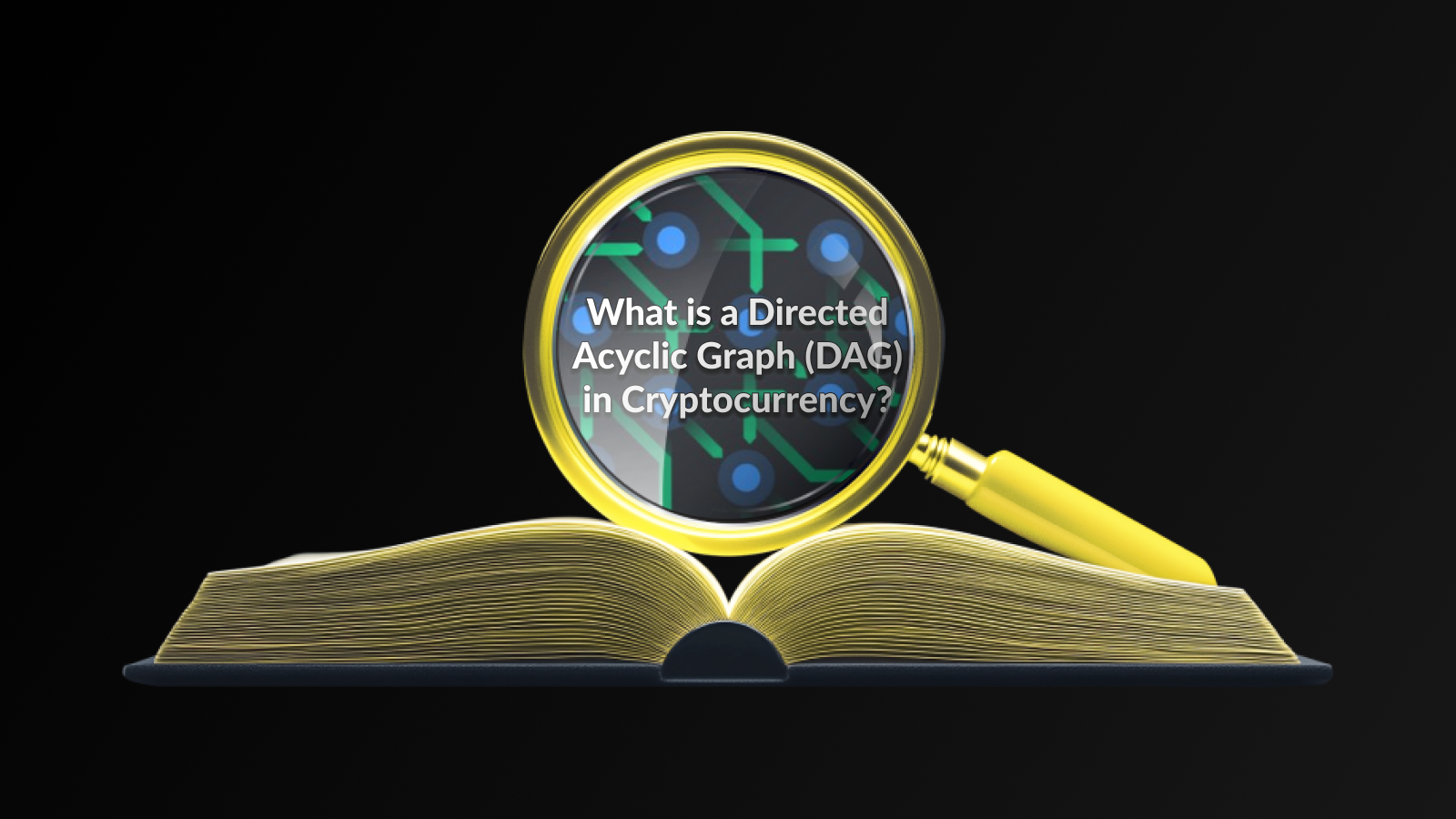Introduction
In the cryptocurrency world, a Directed Acyclic Graph (DAG) is an alternative data structure to traditional blockchains. Unlike blockchain’s sequential chain of blocks, a DAG organizes data in a graph structure where transactions are directly linked, enabling faster processing and greater scalability. DAG is widely used in several blockchain alternatives, such as IOTA and Nano, for addressing blockchain limitations like high transaction fees and low throughput.
How Does a Directed Acyclic Graph (DAG) Work?
A Directed Acyclic Graph (DAG) in Cryptocurrency operates on a fundamental principle of decentralized ledger technology that differs from traditional blockchain structures. Instead of relying on a linear chain of blocks, a DAG allows transactions to be linked in a web-like structure, where each transaction can confirm multiple previous transactions while also being confirmed by others.
In this system, every new transaction must validate at least one or two earlier transactions before it can be added to the DAG. This mutual validation process allows for faster transaction speeds and higher scalability, as there’s no need to wait for a block to be mined, which is a common bottleneck in traditional blockchain systems.
Here’s a brief overview of how a DAG functions:
- Transactions are created: Each user generates a transaction that needs to be added to the network.
- Validation: Before the transaction is accepted, the sender validates prior transactions, selecting them based on specific algorithms.
- Network Confirmation: The newly validated transaction is broadcast to the network, confirming the transactions it referenced.
- No Miners Needed: Unlike traditional blockchains that require miners to validate transactions, the self-validating nature of a DAG means that all users can directly contribute to the network’s integrity.
The structural setup of a Acyclic Graph (DAG) in Cryptocurrency provides an efficient means of conducting transactions with reduced latency and increased throughput, significantly enhancing user experience in comparison to conventional blockchain-based systems.
Advantages of DAG Over Traditional Blockchain
The emergence of the Acyclic Graph (DAG) in Cryptocurrency has opened up exciting possibilities that traditional blockchain networks may struggle to achieve. Here are some key advantages of DAG technology:
- Scalability: DAGs can handle a significantly higher number of transactions simultaneously compared to traditional blockchains, which often become congested as the number of users increases. This characteristic makes DAGs more suitable for a growing user base and large-scale applications.
- Speed: Transactions in a DAG network can be confirmed much faster because of their structure, allowing for near-instantaneous transaction confirmations. This is a significant improvement over the block confirmation times seen in most blockchain systems.
- No Miners Required: Unlike traditional blockchains that require miners to validate transactions, DAG networks often rely on participants confirming their own transactions. This not only reduces the need for extensive computational resources but also minimizes transaction fees.
- Energy Efficiency: The absence of resource-intensive mining processes means that DAG networks can operate with a much lower energy footprint, making them environmentally friendly alternatives in the cryptocurrency space.
- Direct Interconnections: In a DAG, each transaction is linked to multiple other transactions, creating a web-like structure that allows for greater interconnectivity and less centralization risk compared to traditional blockchain systems.
As the cryptocurrency landscape continues to evolve, the Acyclic Graph (DAG) in Cryptocurrency is proving to be a worthy contender, offering several advantages that enhance transaction efficiency and pave the way for innovative applications.
The Acyclic Graph (DAG) in Cryptocurrency technology has seen a diverse range of applications that highlight its unique advantages over traditional blockchain systems. One prominent use case is in scalability solutions, where DAG-based networks allow for faster transaction processing. Unlike blockchains that can suffer from congestion, DAGs enable multiple transactions to occur simultaneously, thus improving network efficiency.
Another significant application is in IoT (Internet of Things) devices, where countless microtransactions are required. The lightweight nature of DAG technologies makes them ideal for handling frequent, low-value transactions without the heavy resource demands typical of blockchain.
Distributed ledger technology employing Acyclic Graph (DAG) in Cryptocurrency is also quite beneficial for real-time data sharing. This is particularly useful in situations where decentralized verification is vital, such as ensuring the integrity of health records or supply chain tracking.
Parameters such as minimal fees associated with transactions make DAG-based systems attractive for micropayments and reward systems, enabling a new economic model for content creators and users alike.
Challenges and Limitations of DAG Technology
While the Acyclic Graph (DAG) in Cryptocurrency offers numerous advantages over traditional blockchain technology, it also comes with its own set of challenges and limitations. One of the main issues is the complexity of implementation. Designing efficient DAG systems requires specialized knowledge and can lead to increased development time and costs.
Another challenge is scalability. Although DAGs are theoretically scalable, in practice, achieving this goal without compromising on security or decentralization can be difficult. For instance, as the network grows, the risk of centralization increases, which undermines one of the key values of decentralized technologies.
Furthermore, the lack of mature infrastructure and tools for development can hinder the adoption of DAGs in the broader cryptocurrency space. Limited community support and fewer resources for troubleshooting can make it more challenging for developers to build and maintain applications based on Acyclic Graph (DAG) in Cryptocurrency.
The security model of DAGs differs from that of traditional blockchains, which may lead to unique vulnerabilities. Since there is no clear consensus mechanism, understanding and mitigating potential attack vectors in a DAG environment remains an ongoing area of research.
Frequently Asked Questions
What is a Directed Acyclic Graph (DAG)?
A Directed Acyclic Graph (DAG) is a data structure that consists of vertices and directed edges, where edges connect the nodes in a direction and there are no cycles, meaning it is impossible to return to the same node once it is traversed.
How does a DAG differ from a traditional blockchain?
Unlike traditional blockchains that require blocks to be mined and confirmed sequentially, a DAG allows multiple transactions to be confirmed simultaneously, improving scalability and transaction speed.
What are the advantages of using a DAG in cryptocurrency?
The advantages of using a DAG include increased transaction speed, lower fees, and enhanced scalability, as it can handle a greater number of transactions without requiring each to be processed in a strict order.
Which cryptocurrencies utilize DAG technology?
Some notable cryptocurrencies that utilize DAG technology include IOTA, Nano, and Hedera Hashgraph, each employing unique features of the DAG structure for transaction processing.
What challenges does DAG technology face in cryptocurrency?
Challenges of DAG technology include potential issues with network security, as it may be more vulnerable to attacks like double-spending, and the need for effective algorithms to maintain consensus across the network.
How does transaction validation work in a DAG?
In a DAG, transaction validation typically involves each new transaction verifying previous transactions, creating a web of confirmations that eliminate the need for a central authority, thus enabling faster and more independent validation.
Is DAG technology suitable for all types of cryptocurrencies?
While DAG technology offers various benefits, it may not be suitable for every use case. Its application is typically favored for microtransactions and IoT due to its scalability, but other use cases might still benefit from traditional blockchain structures.
Disclaimer
This article is for informational purposes only and does not constitute financial, investment, or legal advice. Always conduct thorough research and consult with a professional before making any cryptocurrency-related decisions.





